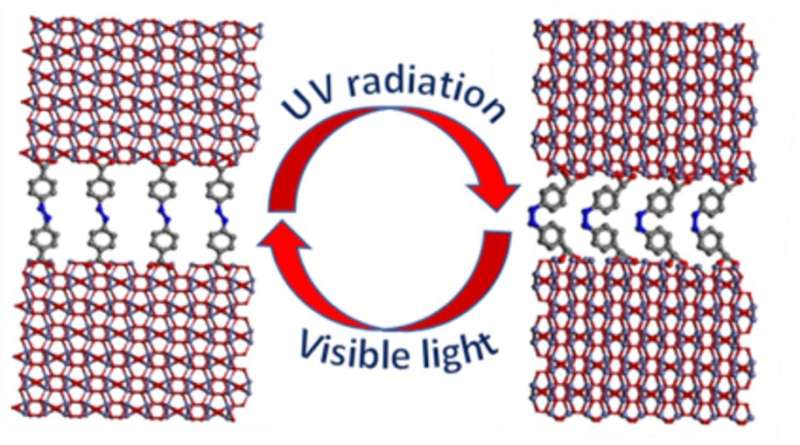New layer-by-layer built inorganic-organic material enables optical switching of magnetic properties

Materials chemists have developed a facile process for piling ultrathin inorganic and organic layers in a pre-designed manner into flexible room-temperature thin-film magnets, whose magnetic properties can be controlled with successive external light illuminations.
In the big data era, photo-controlled room-temperature magnets could open new horizons for high-density information storage, in particular, if these materials could be synthesized from non-critical raw materials and fabricated in device-integrable thin-film form. Now a team of Aalto University researchers from the Department of Chemistry and Material Science and the Department of Applied Physics report such dream-of-the-dream materials.
For the material fabrication, the Aalto researchers utilize the Millennium Prize awarded ALD (atomic layer deposition) technology, which they have modified so that within the ALD-grown ferrimagnetic inorganic layers ultrathin photo-switchable organic layers can be deposited through additional MLD (molecular layer deposition) cycles.
The inorganic component harnessed by the researchers into these thin films is unique itself, as it possesses an extremely high magnetic coercivity field, but is at the same time really simple in its chemical composition, being composed of iron and oxygen only.
The team demonstrated for their ɛ-Fe2O3:azobenzene superlattice thin films the reversible transformation from the straight trans-azobenzene form into the bent cis-azobenzene form, and back, when the films were shone alternatively with UV and visible light. Most importantly, this structural change between the elongated and squeezed azobenzene forms was shown to act as a kind of optical switcher for the magnetic properties of the ɛ-Fe2O3 layers.
The mechanical flexibility offered by the embedded azobenzene layers is an additional bonus for these films, making them highly attractive material components for the next-generation flexible electronics.
"This is a big step forward, as these new optically controlled thin film magnets with inbuilt flexibility can outperform both the classic rigid inorganic magnets composed of heavy and rare raw materials and the recently highlighted molecular magnets which are fundamentally weaker in their magnetic performance," says Dr. Anish Philip from Aalto University, School of Chemical Engineering.
"The currently strongly emerging ALD/MLD technique provides us with an elegant way to build these advanced functional materials with atomic-level control," emphasizes Professor Maarit Karppinen. "This is a new direction for the conventional ALD thin-film technology, and our research group at Aalto is one of the forerunners in this field."
The study was recently published in the Journal of Materials Chemistry C.
More information: Anish Philip et al, Optically controlled large-coercivity room-temperature thin-film magnets, Journal of Materials Chemistry C (2021). DOI: 10.1039/D1TC05100H
Provided by Aalto University





















